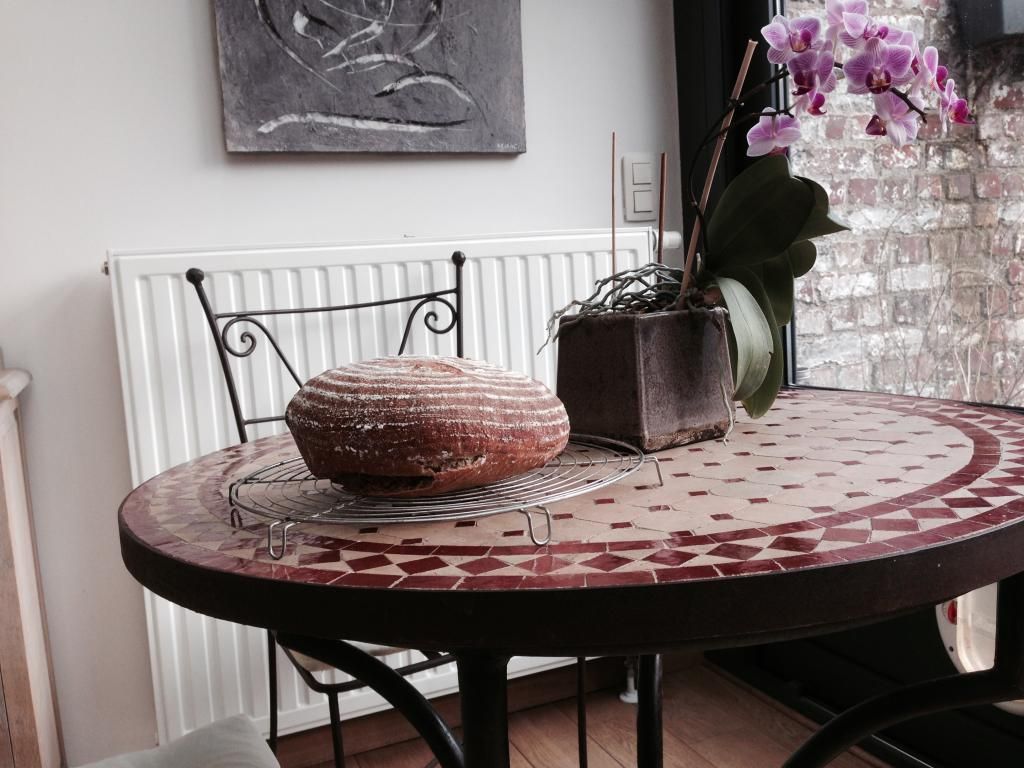Hi All,
It has been some while now that I am baking my sourdough bread. I have been using lots of techniques and finally I have very tasty bread and a good rise.
However, there is still one problem that I cannot seem to solve. As you can see from the picture the sides of the bread crack during the rise in the oven. It always happens: long proof, short proof, different flour.
I bake in my kitchen oven on a metal plate with baking foil. I have a stone as well but it is just too much hassle for me: takes 30 minutes more to warm up, sticks to the stone,... and then it still cracks!
Do you think that it comes down to shaping the loaf prior to proofing?
Looking forward to your comments. Really would like to get the oven spring on top of the loaf in stead of on the sides.
Thanks

Replies
Hello Hood49,
A loaf will 'split' at the weakest point or at the highest stress concentration.
The weakest point is often the join created when the loaf is shaped or, hopefully, your slashes. High stress concentrations come at sharp changes in curvature (such as the bottom of the loaf or an over-topped tin) or a change between restricted expansion and free expansion (again the top of a tinned loaf).
So, when shaping your loaf you should make sure that the join is well sealed and that it is placed up and central in the banneton for proving so that it is down and central when you turn it out for baking. Using little or no flour when shaping helps to ensure a good seal. You should also make sure that the loaf has a good, tight, flawless 'skin' before and during shaping.
There doesn't seem to have been much expansion to your slashes and it is not clear whether you have a boule or a batarde. If it is a batarde, then the slashes should be almost longitudinal (at a slight angle to the centre-line) and not across (at a large angle to the centre-line). For a boule, the pattern is less definable but should preferably be symmetric about the centre of the loaf unless you particularly want to produce an assymetric result after baking. The slashes should be 'undercut' with the blade at a low angle to the surface of the loaf and should be about 10mm deep. If they are not deep enough they can reseal and resist expansion.
Hope this helps and good luck with your projects.
Farinam
Agree with everything Farinam has said.
Re the stone, continue to use that but put baking paper on it to avoid the stick.
The stone will provide the thermal mass to maintain heat consistency when you open the oven door to put the loaf in.
Good luck
Ross